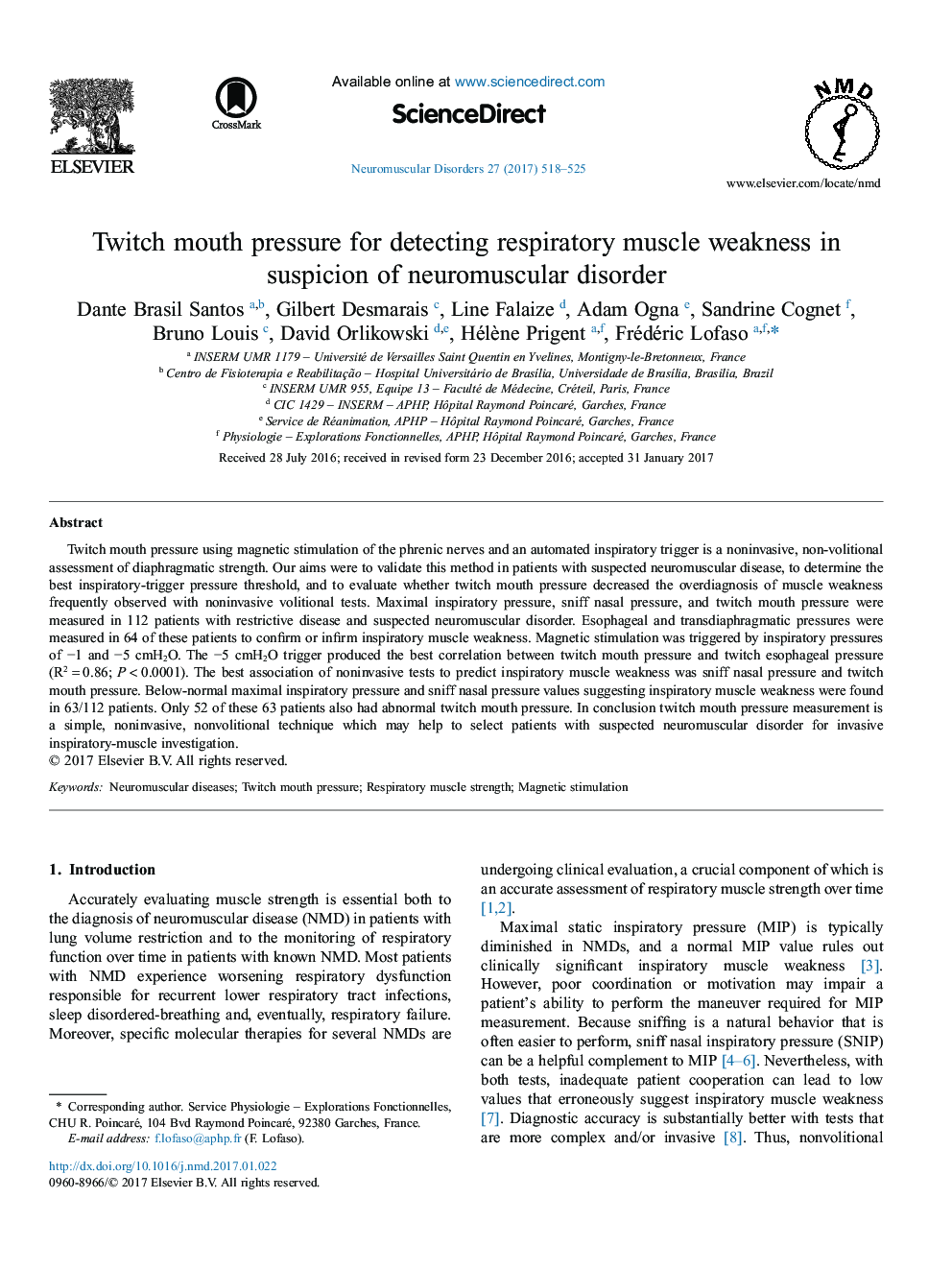| کد مقاله | کد نشریه | سال انتشار | مقاله انگلیسی | نسخه تمام متن |
|---|---|---|---|---|
| 5632025 | 1406524 | 2017 | 8 صفحه PDF | دانلود رایگان |
- Maximal inspiratory pressure measurement is noninvasive but requires cooperative patients.
- Twitch transdiaphragmatic pressure measurement requires the insertion of an esophageal catheter.
- Twitch mouth pressure measurement is nonvolitional/noninvasive and provides reliable results.
- Combining volitional and nonvolitional noninvasive tests constitutes an optimal strategy for assessing respiratory muscle function.
Twitch mouth pressure using magnetic stimulation of the phrenic nerves and an automated inspiratory trigger is a noninvasive, non-volitional assessment of diaphragmatic strength. Our aims were to validate this method in patients with suspected neuromuscular disease, to determine the best inspiratory-trigger pressure threshold, and to evaluate whether twitch mouth pressure decreased the overdiagnosis of muscle weakness frequently observed with noninvasive volitional tests. Maximal inspiratory pressure, sniff nasal pressure, and twitch mouth pressure were measured in 112 patients with restrictive disease and suspected neuromuscular disorder. Esophageal and transdiaphragmatic pressures were measured in 64 of these patients to confirm or infirm inspiratory muscle weakness. Magnetic stimulation was triggered by inspiratory pressures of â1 and â5 cmH2O. The â5 cmH2O trigger produced the best correlation between twitch mouth pressure and twitch esophageal pressure (R2â=â0.86; Pâ<0.0001). The best association of noninvasive tests to predict inspiratory muscle weakness was sniff nasal pressure and twitch mouth pressure. Below-normal maximal inspiratory pressure and sniff nasal pressure values suggesting inspiratory muscle weakness were found in 63/112 patients. Only 52 of these 63 patients also had abnormal twitch mouth pressure. In conclusion twitch mouth pressure measurement is a simple, noninvasive, nonvolitional technique which may help to select patients with suspected neuromuscular disorder for invasive inspiratory-muscle investigation.
Journal: Neuromuscular Disorders - Volume 27, Issue 6, June 2017, Pages 518-525
